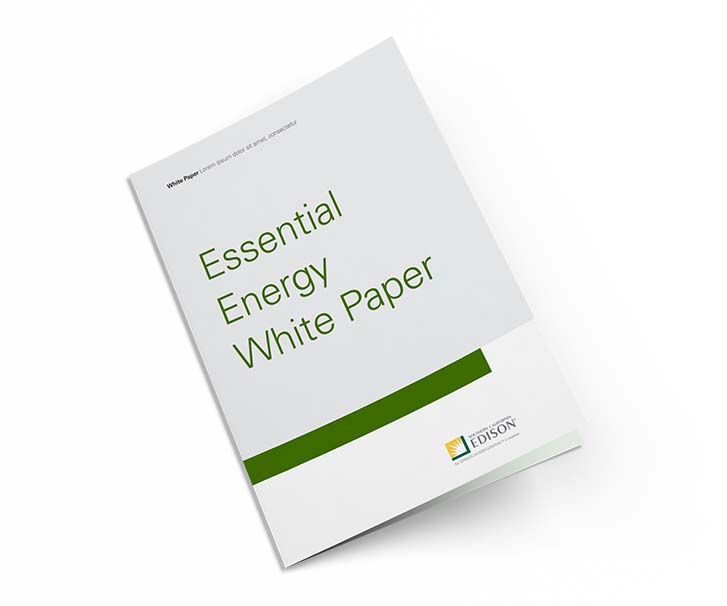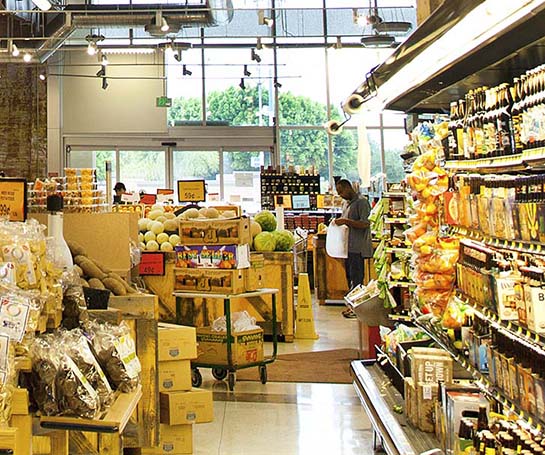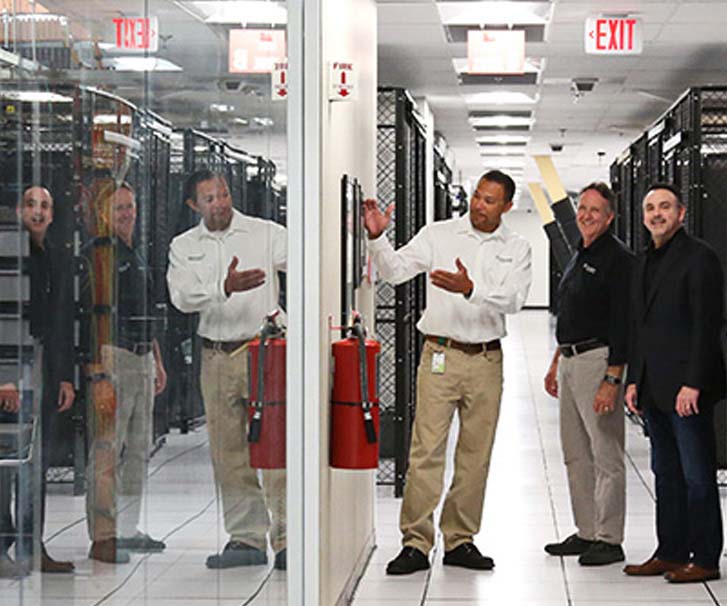
Business Energy Solutions for Every Industry
Energy Successes, Tips and Solutions To Operate Your Business More Efficiently
Just a few small changes can help you improve your heating, lighting, and cooling efficiency—so you’re saving time, energy, and money!

Select Your Industry
Explore industry success stories, energy tips and savings that can help you manage and control energy use during Time-Of-Use (TOU) On-Peak hours and Critical Peak Pricing (CPP) events.

Agricultural
Pitigliano Farms pumped up $80,000 savings on their energy costs.
See their full story.
Learn more about energy-saving solutions for agricultural.

Buildings & Offices
Brookfield Office Properties reduced its energy use by nearly 75% with a combination of energy-efficient lighting and controllable lighting equipment.
See their full story.
Learn more about energy-saving solutions for offices.

Food Processing
Huy Fong Foods, manufacturer of hot sauces—including the highly popular Sriracha Hot Chili Sauce—installed over 600 energy-efficient lighting fixtures and a large number of roof skylights. These upgrades have saved more than 1.4 million kilowatt hours of energy.
See their full story.
Learn more about energy-saving solutions for food processors.

Government
City of Rancho Mirage saves 308,500 kilowatt hours in electricity over a four-year period.
See their full story.
Learn more about energy-saving solutions for government.

Grocery
With SCE’s Express Solutions refrigerator and lighting upgrades, Valencia Liquor was soon saving almost 10% annually on their electric bill.
See their full story.
Learn more about energy-saving solutions for grocery stores.

Lodging
In Southern California, Marriott's Select Service and Extended-Stay hotels made significant upgrades with energy-efficient equipment and earned $495,000 in incentives.
See their full story.
Learn more about energy-saving solutions for the lodging industry.

Manufacturing
Shmaze Custom Coating received energy-saving equipment upgrades and earned $51,500 in incentives and demand response bill credits.
See their full story.
Learn more about energy-saving solutions for manufacturers.

Retail
Forest City Enterprises’ three malls reduced their energy use by 15% participating in demand response and using upgraded, energy-efficient lighting and air-conditioning (A/C) system controls.
See their full story.
Learn more about energy-saving solutions for retail spaces.

Restaurants
The Royal Vista Golf Club upgraded its kitchen equipment, saving them $2,000 in annual energy costs.
See their full story.
Learn more about energy-saving solutions for restaurants.

Schools and Universities
Viewpoint School earns A+ in enhancing sustainability and saving nearly 87,000 kilowatt hours.
See their full story.
Learn more about energy-saving solutions for schools and universities.

Warehousing
Coastal Pacific Food Distributors received incentives of $190,000.
See their full story.
Learn more about energy-saving solutions for warehousing.

Water and Waste Treatment
West Basin Municipal Water District saves $90,000 annually.
See their full story.
Learn more about energy-saving solutions for water and waste treatment.

Data Centers
CenturyLink enhances performance and receives annual savings of more than 2.1 million kilowatt hours.
See their full story.
Learn more about energy-saving solutions for government.
Easy Ways to Reduce Your Electricity Usage
Here are some simple ways to manage your energy use, especially during the summer when Time-Of-Use (TOU) On-Peak hours and Critical Peak Pricing (CPP) events are in effect.
- Charge batteries and battery-operated equipment prior to TOU On-Peak hours and CPP events, then disconnect battery charges and use only pre-charged equipment during TOU On-Peak hours and CPP events
- Adjust employees’ schedules so energy-intensive production happens at TOU Off-Peak hours
- Plan your irrigation to maximize lower cost time periods such as TOU Mid- or Off-Peak hours
- Pump water into a reservoir prior to TOU On-Peak hours
- Pre-cool in the morning, then reduce or shift refrigeration load
- During TOU On-Peak hours:
o Shut off all or most pumps
o Decrease use of aerators
o Reduce or shift production tasks
o Turn off vertical lifts, conveyor belts and non-essential process equipment
o Shift use of non-essential electrical equipment
- Pre-cool in the morning, then reduce or shift refrigeration load
- Charge batteries and battery-operated equipment prior to TOU On-Peak hours and CPP events, then disconnect battery charges and use only pre-charged equipment during TOU On-Peak hours and CPP events
- During TOU On-Peak hours and CPP events:
• Turn down refrigerated storage and refrigerant compressors
• Reduce air compressors and processing loads using pre-programmed load shed strategies
• Reduce or shift production tasks
• Turn off vertical lifts, conveyor belts, and non-essential process equipment
• Schedule batch or continuous processes around planned peak hours
- Pre-cool work areas in the morning, then cycle ventilation and A/C units
- Charge batteries and battery-operated equipment prior to TOU On-Peak hours, then disconnect battery charges and use only pre-charged equipment during TOU On-Peak hours
- During TOU On-Peak hours and CPP events:
• Encourage staff to minimize printing to reduce energy
• Enable lower power mode setting for computers, monitors, and imaging equipment
• Use partial lighting level wherever possible in garages
- Pre-cool work areas in the morning, then cycle ventilation and A/C units
- Charge batteries and battery-operated equipment prior to TOU On-Peak hours and CPP events, then disconnect battery charges and use only pre-charged equipment during TOU On-Peak hours and CPP events
- Turn off ice machines before or after TOU On-Peak Hours and CPP events
- During TOU On-Peak hours and CPP events:
• Turn down refrigerated storage and refrigerant compressors
• Delay use of electric resistance defrost controls and the use of anti-sweat heaters
• Set HVAC settings at minimum settings
• Turned off unused and backup equipment
- Pre-cool in the morning, then reduce or shift refrigeration load
- During TOU On-Peak hours and CPP events:
§ Set up a reduced duty cycle for garage HVAC fans
§ Use partial lighting level wherever possible in garages
- Conduct dishwashing, housekeeping, waste processing, and laundry activities before or after TOU On-Peak Hours and CPP events
- Turn off ice machines during TOU On-Peak hours and CPP events and use a larger ice machine during TOU Off-Peak hours
- Pre-cool work areas in the morning, then cycle ventilation and A/C units
- Turn off ice machines during TOU On-Peak hours and CPP events and use a larger ice machine during TOU Off-Peak hours
- During TOU On-Peak Hours and CPP events:
o Reschedule dishwashing/laundry processes
o Set up a reduced duty cycle for garage HVAC fans
o Use partial lighting level wherever possible
- During TOU Off-Peak hours and Critical Peak Pricing (CPP) events:
o Adjust employees’ schedules
o Reduce or shift production tasks
o Reduce compressed air discharge pressure by 10 psi and processing loads using pre-programmed load shed strategies
o Turn off vertical lifts, conveyor belts, and non-essential process equipment
o Re-schedule batch or continuous processes
- Pre-cool work areas in the morning, then cycle ventilation and A/C units
- Charge batteries and battery-operated equipment prior to TOU On-Peak hours, then disconnect battery charges and use only pre-charged equipment during TOU On-Peak hours
- During TOU On-Peak hours and CPP events:
• Encourage staff to minimize printing to reduce energy
• Enable lower power mode setting for computers, monitors, and imaging equipment
- Turn off ice machines during TOU On-Peak hours and CPP events and use a larger ice machine during TOU Off-Peak hours
- Pre-cool work areas in the morning, then cycle ventilation and A/C units
- During TOU On-Peak hours and CPP events:
o Reschedule dishwashing
o Use partial lighting level wherever possible
- During TOU On-Peak hours and CPP events:
o Use partial lighting level wherever possible
- Pre-cool work areas in the morning, then cycle ventilation and A/C units
- Charge batteries and battery-operated equipment prior to TOU On-Peak hours and CPP events, then use only pre-charged equipment during TOU On-Peak hours and CPP events
- Charge batteries and battery-operated equipment prior to TOU On-Peak hours and CPP events, then use only pre-charged equipment during TOU On-Peak hours and CPP events
- During TOU On-Peak hours and CPP events CPP events:
o Turn off commercial ice machines and decorative fountains
o Turn off unnecessary indoor lighting, signs, and office equipment
o Raise cooling thermostat settings
o Enable lower power mode setting for computers, monitors, and imaging equipment
- Charge batteries and battery-operated equipment prior to TOU On-Peak hours and CPP events, then use only pre-charged equipment during TOU On-Peak hours and CPP events
- Pre-cool in the morning, then reduce or shift refrigeration load
- During TOU On-Peak hours and Critical Peak Pricing (CPP) events:
o Raise cooling thermostat settings
o Reduce air compressors and processing loads using pre-programmed load shed strategies
o Turn off vertical lifts, conveyor belts and non-essential process equipment
Manage Your Business with My Account
Track and manage your energy costs with our online tool. Learn more >


Save Water for More Savings
- Replace older, less water-efficient equipment with new ones that minimize water demand
- Make comprehensive changes to industrial processes to reduce water consumption per unit of output
- Change industrial process water system to capture, treat, and reuse processed wastewater
- Install new, water-efficient equipment in commercial kitchens and laundries
